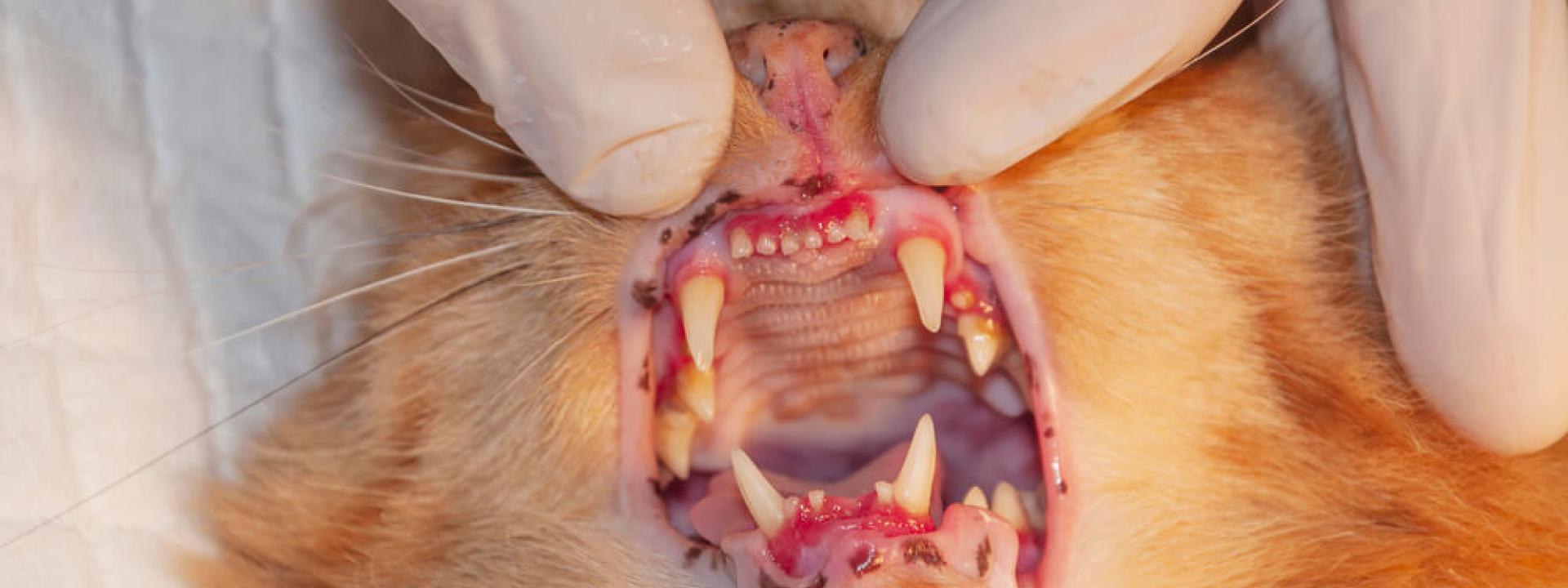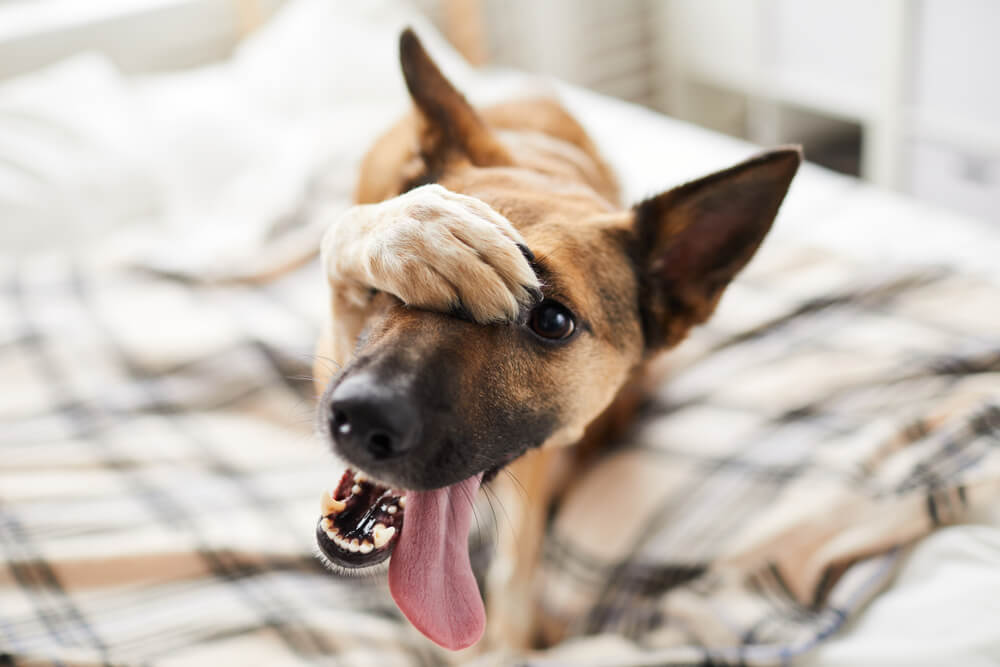
Periodontal disease is pets’ most common condition, as up to 90% of all cats and dogs are affected by gum disease by age 3. With such a high likelihood that your four-legged friend will wind up with dental issues, you should learn how to spot common indicators. Tag along as our Tennessee Avenue Animal Hospital team walks you through a periodontal disease diagnosis as we check for 10 signs.
#1: Bad breath in pets
Halitosis is usually pets’ first periodontal disease sign. While you may believe your pet’s doggy breath is normal, a healthy mouth should produce minimal odor. As oral bacteria, food particles, and other debris accumulate in your pet’s mouth, they create a foul odor that may prevent you from cuddling too close to your furry pal.
#2: Gingivitis in pets
Red, swollen, or bleeding gums indicate an oral bacteria infiltration. The invading bacteria irritate and infect the gingival tissue, sneaking below the gumline to destroy supportive tooth structures and traveling to major organs. Over time, oral bacteria, plaque, and tartar can lead to gingival recession, exposing tooth roots.
#3: Plaque and tartar buildup in pets
Plaque begins to form on teeth within hours after your pet eats, and, while generally colorless, the film can have a yellow tint. If plaque is not scrubbed away, the substance mineralizes into cement-like calculus (i.e., tartar) within a few days. Tartar can be varying shades of yellow, brown, and grey, and it may also trap food and hair in between your pet’s teeth, adding to the foul breath stench. In most cases, plaque and tartar buildup first appear along the gumline, expanding to cover the teeth’s crowns over time. Therefore, closely monitor your pet’s gingival margins for early-stage periodontal disease.
#4: Excessive drooling in pets
Oral discomfort can cause your pet to drool more than usual. Saliva may become blood-tinged or thick and ropy as periodontal disease advances.
#5: Loose or missing teeth in pets
As oral bacteria attack the tooth roots, periodontal ligaments, and surrounding bone, the teeth’s supportive structures become weak and unstable. Teeth can become loose, shifting in place as your pet eats and causing intense pain, and they may fall out. Loose or missing teeth are generally an advanced periodontal disease sign.
#6: Reluctance to chew in pets
While pets often conceal discomfort and pain, periodontal disease can become severe enough to decrease their appetite and cause them to be reluctant to chew. If you normally feed your pet a combination of dry and canned food, you may notice them showing a preference for soft food. Your four-legged friend may also turn down their favorite chews and hard treats if they are suffering from periodontal pain.
#7: Chewing on one side of the mouth in pets
To avoid chewing with a damaged or diseased tooth, your pet may shift their food to one side of the mouth while eating. Your furry pal may tilt their head or make an odd lip-smacking sound as they eat and try to avoid contact between the painful tooth and the food. In addition, your pet may gulp down their food without chewing, swallowing it whole to prevent a painful crunch.
#8: Dropping food while eating in pets
While some pets are messy eaters, pets with periodontal disease may drop food while eating because of sudden pain. As your pet chews, the impact of a diseased tooth against a healthy tooth or food can cause them to essentially spit out the food.
#9: Head shyness in pets

Severe periodontal pain can cause your pet to shy away from your touch. They may become defensive when you try to pet their head or ears, hissing or growling in warning. If you attempt to peek in their mouth or brush their teeth, their warnings may escalate to swatting or snapping. Overall, your pet may become irritable, withdrawn, or unsociable until their periodontal pain has been treated.
#10: Facial swelling in pets
In some cases, periodontal infection pockets can lead to tooth-root abscesses. If the large upper premolar (i.e., carnassial tooth) is affected, a lump may appear on your pet’s muzzle under their eye, indicating an abscess.
Keep in mind that pets are masters at hiding pain, illness, and infection signs, so you may not realize that your furry pal has an issue until dental disease has become advanced. Closely monitor your four-legged friend’s oral health—ideally through regular toothbrushing—and contact our Tennessee Avenue Animal Hospital team if you spot periodontal disease signs.

